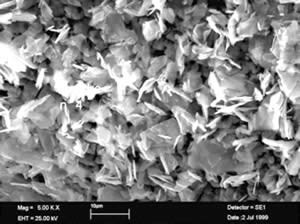Eliminating Benchwork For Large Mold Surfaces
EDM dielectric additives can subtract labor costs for mold makers by eliminating the need for secondary hand polishing.
The real rub in moldmaking is the secondary hand polishing often required to massage a machined mold surface to the mirror-like finish necessary for the molding process. This extra step is particularly time-consuming for large molds that have a significant surface area to be polished. Every mold maker strives to eliminate such benchwork to compress total tool manufacturing time and speed turnaround to its customers.
Ram EDM can often deliver a quality finish on small surface areas, because it is relatively easy to create the tiny, delicate sparks necessary for a fine finish using a small electrode. Attaining such finishes can be difficult when eroding with a large electrode, though, because the electrode’s high resistance won’t permit the low-energy-level condition necessary to create small sparks. Charmilles (Lincolnshire, Illinois) has developed a dielectric additive technology it calls Gammatec to facilitate homogeneous sparking conditions by introducing evenly distributed, tiny conductive flakes in the spark gap. The additive works with both graphite and copper electrodes to improve the machined finish on large mold surfaces.
The technology mixes fine graphite flakes (0.0003 inch in size) into the dielectric fluid at a concentration of 2 grams per liter. The conductive graphite particles help to diffuse the ignition time and electricity level between the workpiece and electrode to help create small sparks. The technology is said to allow finishes to 0.13 microns on large surface areas and reduce electrode wear by approximately 30 percent when using the company’s Roboform 350 and 550 ram machines.
Because the graphite flakes are so tiny, they remain suspended in the dielectric fluid. Additional flow channels in the dielectric tank and the worktank also assist in keeping the particles evenly distributed.
Other additive technologies do exist. One reason Gammatec is said to be different is that it doesn’t require a separate filtration system (some systems use a magnetic filter to trap contaminants). In addition, standard EDM and fine-finish machining with Gammatec are both possible on the same machine. Standard EDM can be performed by filtering the graphite additive from the dielectric system, which the company says takes 20 minutes.
To learn more about the supplier, click here: GF Machining Solutions LLC
Related Content
-
Understanding Swiss-Type Machining
Once seen as a specialty machine tool, the CNC Swiss-type is increasingly being used in shops that are full of more conventional CNC machines. For the newcomer to Swiss-type machining, here is what the learning curve is like.
-
Inside an Amish-Owned Family Machine Shop
Modern Machine Shop took an exclusive behind-the-scenes tour of an Amish-owned machine shop, where advanced machining technologies work alongside old-world traditions.
-
A New Milling 101: Milling Forces and Formulas
The forces involved in the milling process can be quantified, thus allowing mathematical tools to predict and control these forces. Formulas for calculating these forces accurately make it possible to optimize the quality of milling operations.

.jpg;width=70;height=70;mode=crop)
















